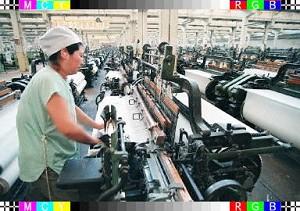According to statistics released by the Ministry of Commerce of the People’s Republic of China, from January to May of 2005, market demands for 900 commodities across 39 professions had declined, causing excess supply of textiles, household appliances, and shoes, etc. These figures were an increase of 19 percent from the same period last year and make evident China’s need for further macroeconomic regulations.
China Business News stated that this trend in China sends out three thought-provoking signals. First, China must strengthen macroeconomic regulation policies. Second, the Chinese government should invest rationally and pay more attention to market demands. Third, in order to enhance economic growth in China, the government should also understand consumer preferences.
The report also showed that many Chinese enterprises had blindly invested in iron and steel production because of high market prices. As a result, the supply of iron and steel eventually exceeded demand and caused the price, which had continuously risen in the past three years, to fall in April. In May and June, the market price barely broke even with production costs.
China National Development and Reform Commission’s Economic Bureau Assistant Commissioner Zhu Hongren pointed out that moderate recedes of industrial profit is reasonable, yet if the situation persists and continues to expand, national economic development will be affected. He believes that the next step should be to improve macroeconomic regulations and to partially impede blind productivity expansions in certain businesses.
The report stated that among the existing 84 textile products in China, 80 percent faces supply over demand. It was estimated that this problem would become even more prominent in the second half of the year since some textile enterprises will turn to domestic markets due to increase in export tax, reduction in transit trade and conflict within textile trade.
In addition to sales reduction in automobiles, houses and communication technology this year, agricultural produce prices also dropped recently. This, along with increase in agriculture capital and rural consumer expenditures, brought a reduction in farmers’ income and subsequently weakened the market demand in the country.




